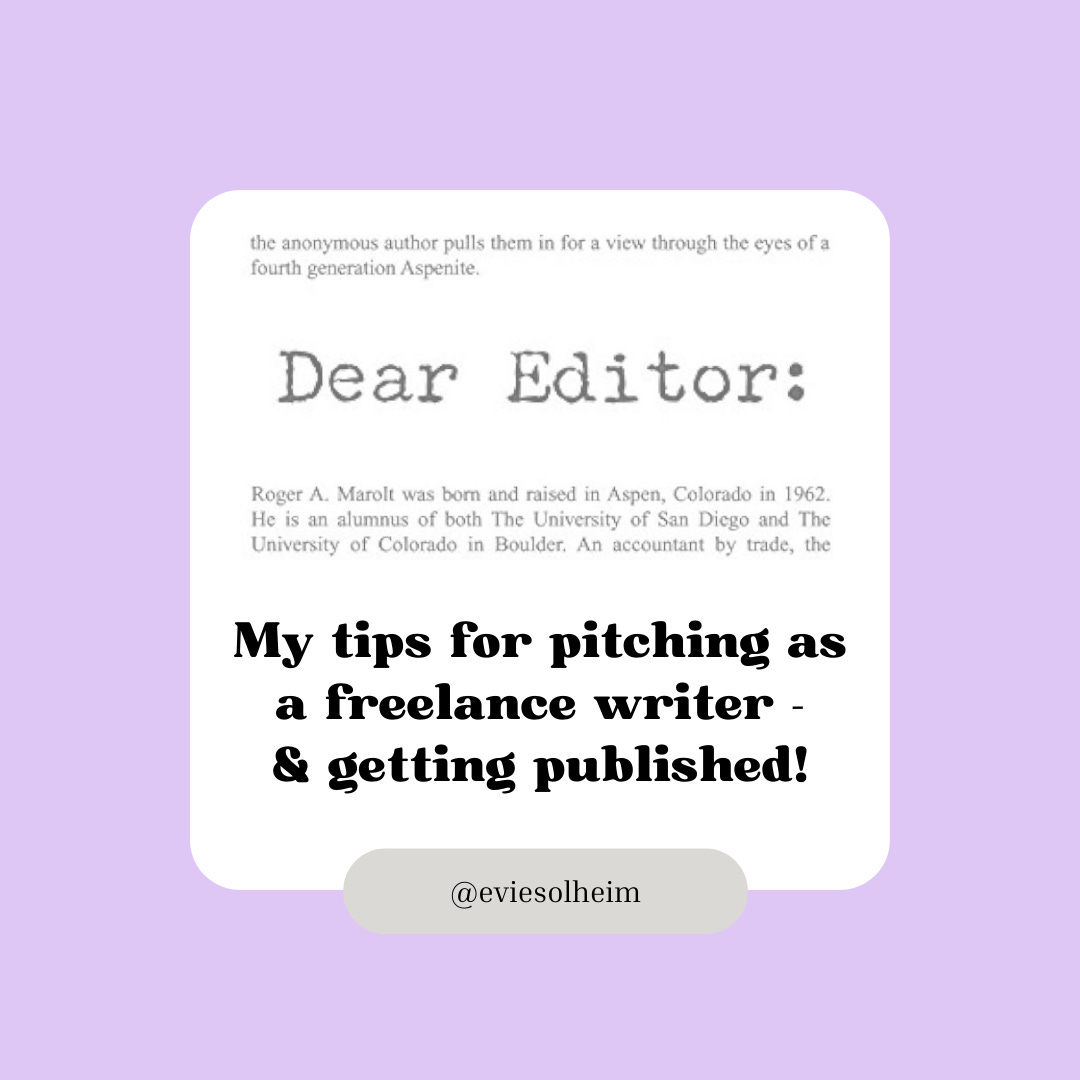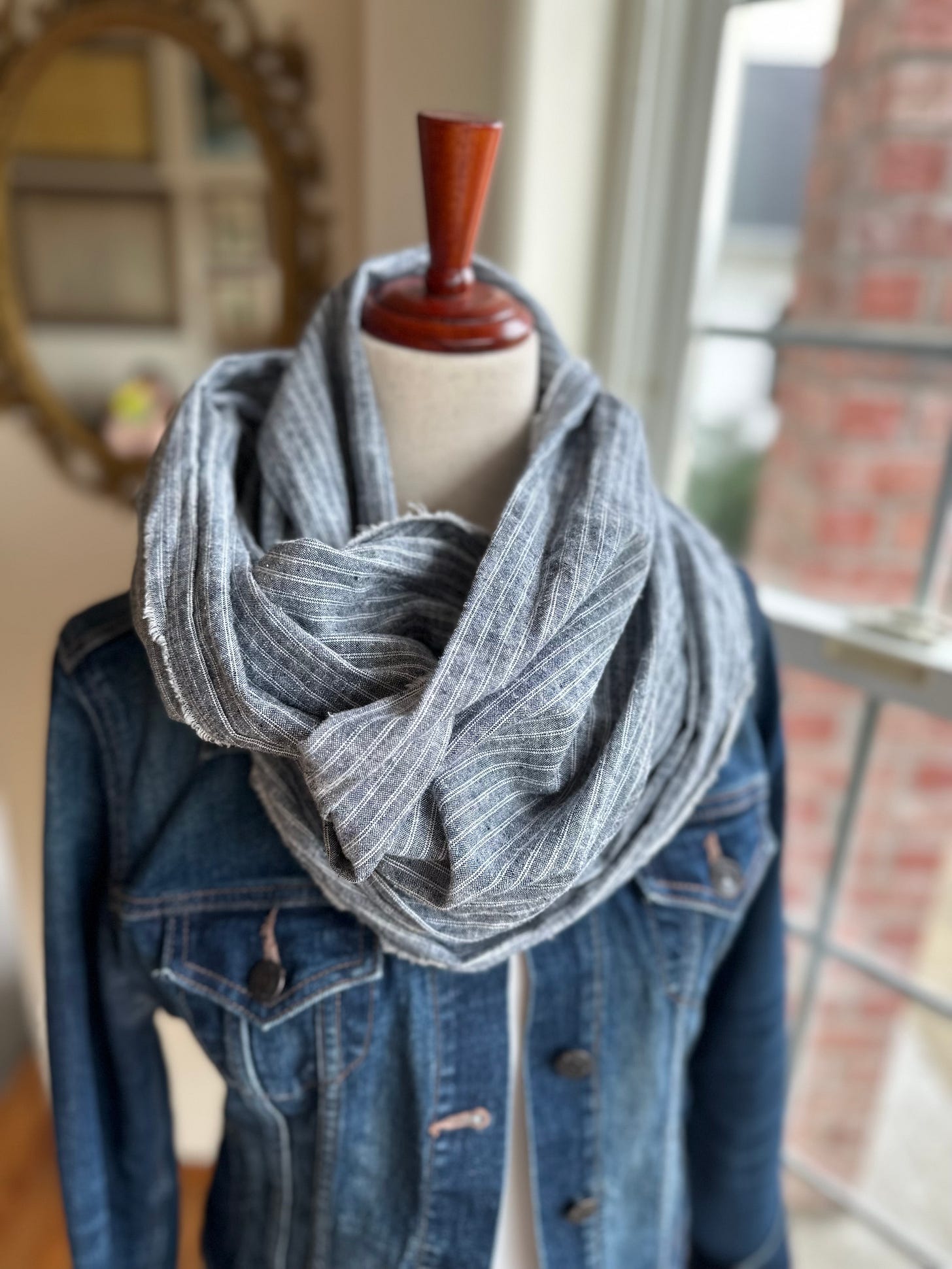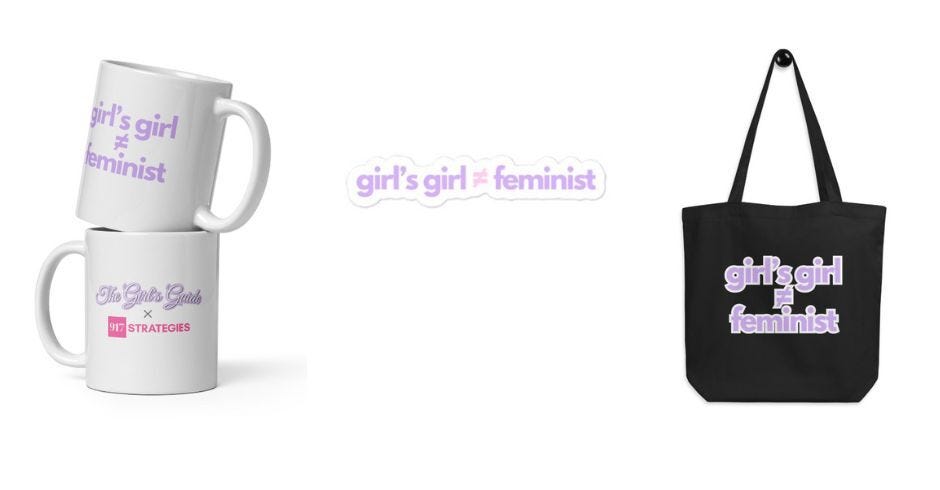Welcome back to The Girl’s Guide — I hope you all have a blessed Good Friday. If you missed the most recent issue, find it here.
Find me on Instagram and Twitter so you don’t miss anything Girl’s Guide.
Evie’s Tips for Freelance Writing
I have a secret to tell you: freelance writing isn’t just for aspiring Pulitzer Prize winners. If you’ve ever read an article and thought, “Hey, I’m pretty sure I know more about this topic than whoever wrote this,” then you’ve probably got the makings of a great freelance pitch rattling around in your brain.
Researching and writing are some of my main hobbies, so freelance journalism has been a natural fit for me as I focus on motherhood but try to make time for other passions, too. Heck, it’s nice to get paid for something you’d probably do anyway!
I’ve been meaning to write up my freelance writing advice for a while now, and this tweet from Freda Donnelly gave me the kick in the pants to actually get it done. I’ve written about what a day in the life of a freelancer looks like (read it here), but in today’s newsletter I hope to share nitty-gritty advice on getting your work published. Pitching an article can be the most intimidating part of freelance journalism, so I hope these tips inspire you to go for it. You never know if an editor will say yes — I’ve certainly been pleasantly surprised plenty of times!
Read, Read, Read — Especially the Outlets You Pitch
As someone who’s worked in both journalism and public relations, I can tell you that it’s painfully obvious when someone submits a pitch that shows they have absolutely no knowledge of the publication. Don’t be that person! If you’re interested in freelance writing, start reading your favorite outlets with an eye to some key details: how they format titles, how long the average article is, and whether each story contains exclusive quotes or details. Recognizing some of these basic details will help you craft a solid pitch in which your proposed title matches the site’s style, your proposed word count is within their normal range, and your angle has the same amount of originality as the site’s other writers.
Other questions you can ask yourself to get familiar with a publication’s expectations:
Do any of the writers use first person? If so, when?
Does the publication frequently use freelance contributors?
Does the publication only publish “quick turn” pieces on news events? (For example, is all of its coverage of the Oscars published within 24 hours after the event, or does the publication continue to publish articles on the Oscars days or even weeks after the event?)
Don’t Do a Double Take
Instead of pitching an outlet you found through a Google search, I recommend pitching an outlet you read regularly or semi-regularly (within reason — I wouldn’t recommend sending your first-ever pitch to The Atlantic). You don’t need to come up with an incredibly unique pitch to get published — oftentimes, simpler is better — but at the same time, you don’t want to pitch an article that is too similar to something the outlet has already published. I always search for the keywords related to my pitch on the outlet’s website, but I also like to go a step further and use Google to search the website for any stories with those keywords as well. I find that Google often trawls results that don’t show up using the website’s search bar. You can find instructions for one way to do that here.
Think Like an Editor
Editors are just like you and me: they don’t want to spend any more time reading emails than they have to. In most circumstances, your pitch for an article doesn’t need to be more than three or four paragraphs. My pitch for my nearly 3,000-word story on home birth was 386 words including salutation and signoff.
If you have experience being professional and courteous via email, then you’re already on your way to sending a great pitch. What you include in your pitch will vary depending on whether you are trying to write a personal essay, numbers-based oped, or something else. But at a minimum, you’ll want to include relevant statistics, why readers care about the topic right now, potential interview subjects, an estimated word count, and the timeframe you expect for completing the article. And unless you already know the editor you’re pitching, you’ll want to include a little bit about yourself and why you’re interested in covering this issue.
I found this blog post with freelancing pitch templates pretty informative – especially the author’s advice about giving the editor a deadline to respond to your pitch. If you’re hoping to write about a topic that’s time-sensitive, you will want to know if your pitch is accepted or rejected quickly so you can move on to another publication.
Wondering how to get in touch with an editor in the first place? Most publications have a button you can find at the bottom of their homepage labeled “Contact Us” or “Submissions” that will tell you what you need to know. You may need to fill out a web form, or you may see the email address for specific editors to contact depending on the topic you hope to cover. I’d recommend reaching out however the publication directs you to, but there are exceptions if you know a particular editor is interested in submissions on the topic you hope to cover. You can usually find his or her email through a social media or bio page.
Pitching Is an Art, Not a Science – Don’t Get Discouraged
It might take you several tries to get your first article placed. I promise it’s worth it. Just because your pitch is rejected doesn’t mean it’s bad. After all, every publication and every editor is different. No matter how niche, personal, or even weird your pitch is — there’s probably a publication out there for it. (Just one word of advice if you choose the personal essay route: Don’t go full The Cut. Everybody knows you never go full The Cut.)
These are my top tips for pitching success. I hope to do a Part II soon with more miscellaneous freelancing advice — please let me know what topics you would find helpful by replying to this email!
Interview with Anna Talcott
I know many of you readers love to support products that are made in America, so you will definitely enjoy today’s interview with Anna Talcott, founder of Broad Street Clothing! Anna is a big proponent of slow fashion and is taking her love of quality clothing to the next level with her company, which launches Friday, April 5. Follow Broad Street Clothing on Instagram.
What does your life look like right now?
My life these days is quieter than it used to be. I am a stay-at-home mom to our six children, but our youngest is 10, and our oldest have started moving out, so we’re entering a new phase of parenting that has less mess and noise and more time to sit and read. I still homeschool our younger children, so my mornings are full teaching them, and afternoons vary driving them to activities and quiet days at home reading books aloud (especially in the Idaho winter!).
What inspired you to start Broad Street Clothing?
Honestly, what inspired me to start Broad Street Clothing was spending many years nursing babies and really disliking the nursing cover options available. I want to offer beautiful, well-made clothing to moms in that phase of life, knowing that anything you wear while having small children needs to be durable and washable. Broad Street is starting small with infinity scarves from natural fabrics, with plans to expand into clothing soon.
What's your advice to women currently in their 20s who feel the rush to accomplish all their dreams as soon as possible?
I think young women feel a lot of pressure today to make sure that their career is stable before starting a family, and then they are told that family can squeeze in around the edges of the career they’ve got established. They are given the impression that if they don’t do it in that order, they will have missed a chance to make something of themselves. But life doesn’t stop at 40! I think we should be honest with women that their 20s and 30s are their best years for having kids (for so many reasons!) and that they will still have time afterward to pursue something, if they want to. Having kids is something that has a time limit on it, but your career is not. There is so much freedom when your kids are a little older to pursue something that interests you. Do not buy the lie that career is a one-shot opportunity.
What's the biggest thing you've learned as an entrepreneur that's surprised you?
Being an entrepreneur has been such a wild ride! I feel like I waffle between exhilaration and terror almost every day. The biggest thing that has surprised me is seeing what happens when I push myself to do things that are well outside my comfort zone. I attended a fabric fair in New York City last year that made so many connections and opened so many doors. It’s a group of people that I would not run into in my daily life, but because we all love fabric, talking with them is easy and fun.
What's the most disappointing fast fashion purchase you ever made?
My most disappointing fast fashion purchase is a memory from over 20 years ago. When I was in college, my parents gave me a J.Crew pea coat for Christmas. It was beautiful, but within a few wears, one of the seams had split open. I swore off buying J.Crew because I was so disappointed, but I can’t stay away because I love their classic silhouettes so much. My husband still teases me about my “J.Crew boycott.”
Bulletin Board
HOUSING LISTING FROM A GIRL’S GUIDE READER: “We are looking for a third girl for a three-bed row house near Lincoln Park, 5 blocks from the stadium armory metro and 3 stops from Capitol South. Room would be $950 a month plus utilities, usually $40-$80 a month. WiFi is free! Our house is spacious and sunshiny with a renovated kitchen, 1.5 baths, a front porch, back deck, fire pit, and sunroom. Great landlord who hasn’t raised our rent in four years. Looking to fill ASAP.”
Email Evie at girlygirlsguidetodc@gmail.com to get connected.
The Haps
The Little Cherry Tree That Could
If you’ve ever wandered around DC’s Tidal Basin long enough, chances are you’ve seen Stumpy, a little cherry blossom tree that seems to be all trunk but still manages to shoot forth a few blooms each year. Now DC residents are saying goodbye to Stumpy, who has to be cut down to repair the seawall near where he is planted. You can read about Stumpy fans’ tributes to the tree in this article — just don’t tell me what you think the Cherry Blossom 10-Miler mascot really looks like.
Here are other links to what I’ve been reading lately:
Do Large Families Hold the Key to Reversing Birth Rates?: Carmel Richardson reviews Catherine Ruth Pakaluk’s new book Hannah’s Children: The Women Quietly Defying the Birth Dearth.
- interviews Romanian dissident Daniela Ionescu.
Accepting Unspoken Apologies: Apology 102: Freda Donnelly pens a convicting essay about handling friend breakups.
Defining Your Personal Workwear Style: Sarah Selip shares her tips (as well as tips from ladies including yours truly!) for starting your workwear style journey as an intern.
Evidence Shows Faith In God May Be The Answer To The Epidemic Of Women Committing Suicide: Author
(interviewed in the last edition of The Girl’s Guide) writes about our nation’s mental health crisis.
Got Merch?
The Girl’s Guide now has MERCH thanks to my collaboration with 917 Strategies, the conservative PR firm founded by Sarah Selip. Sarah has an entire merch shop you’ll want to check out, and I’m very excited for our "Girl’s Girl ≠ Feminist” collection available now. It’s a cheeky way to acknowledge that just because you don’t feel like you can get behind modern feminism, that doesn’t mean you love or support your fellow women any less.
Use promo code GIRLSGUIDE15 to get 15% off your mug, tote bag, or sticker! And be sure to tag me in any photos of your merch you post online.











Thank you so much for sharing my Romanian dissident profile!
This was insightful, incredibly helpful, and actually made me lol at some parts. Thank you so much!